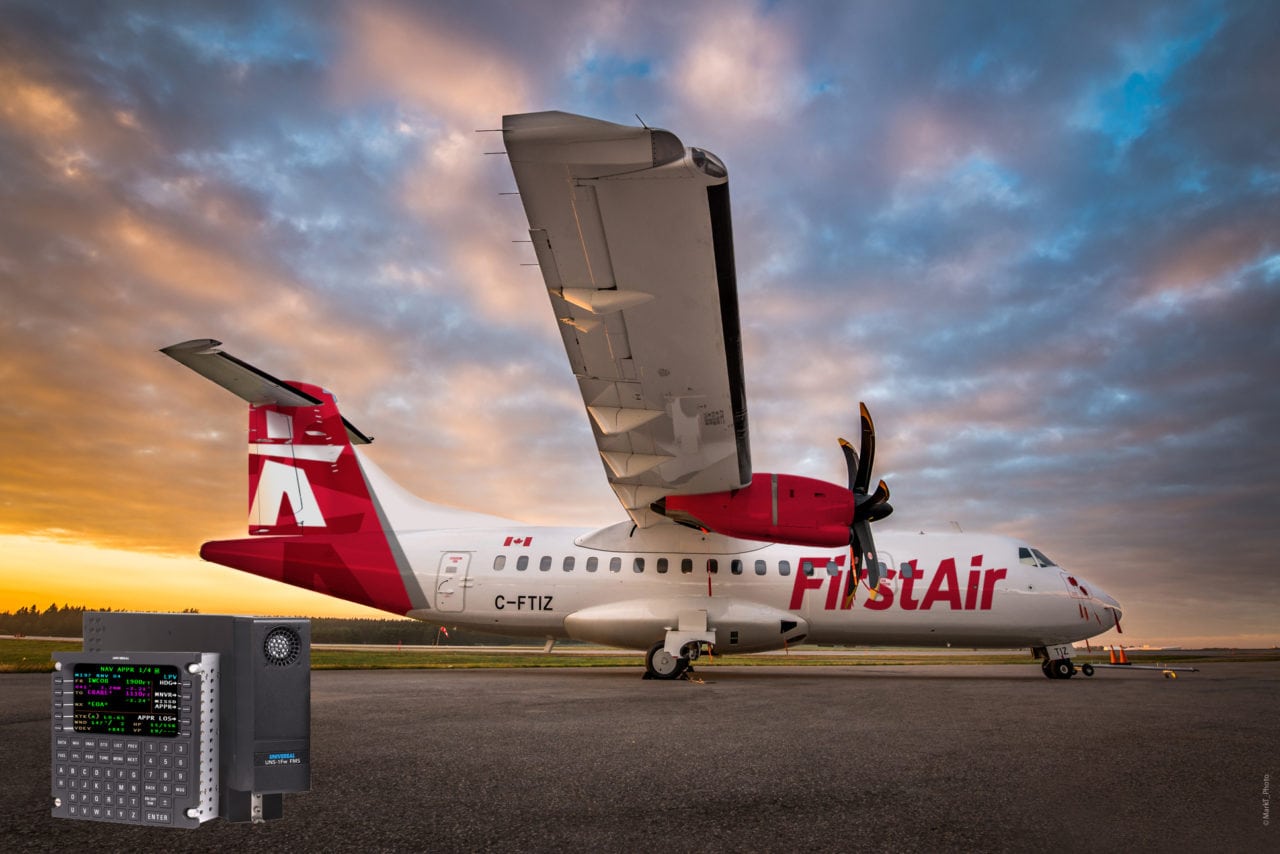
An ATR 42 in service to regional Canadian airline First Air. Photo courtesy of Mark Taylor
The first ATR 42-500 type aircraft have been equipped with satellite-based augmentation system (SBAS)-capable flight management system (FMS), thanks to Universal Avionics and operator First Air.
The Canadian regional airline performed the engineering design, certification and installation itself to integrate dual UNS-1Fw SBAS-FMSs and terrain awareness warning systems (TAWS) onto six ATR-500s.
“It gives them a mission completion rate that they did not have before,” said Norm Matheis, Universal Avionics’ senior regional sales manager for Canada during a call Tuesday. “A lot of the communities they fly into are fly-only communities… They operate in the austere environment of the Canadian North.”
He said the SBAS-FMS provides “the ability to put gravel and ice runways in the navigation database, temperature compensation — to automate functions that some navigators still need to do manual calculations for.”
One of the key offerings of the SBAS-FMS is the localizer performance with vertical guidance (LPV) approach capability. Matheis said that many of the areas that an operator such as First Air flies into — particularly places like mining sites, where a runway will be the first transportation method established — demand LPV approaches, which can be particularly tricky in the inclement weather the region often harbors. However, with people needing to get in and out for medical attention or to get home, the ability to make those approaches is crucial.
Matheis said that it is unusual to see a regional airline able to take on the engineering load by itself like First Air.
“The Deltas, the Americans, very much so,” he said. “Not in a regional airline; I just can’t think of another one that has that strong an engineering capability.”
The fact that it did could end up being mutually beneficial, though. He said that UA would market this as past performance to other ATR 42-500 operators and that First Air, which sometimes does third-party work, might play a part in that.
“ATR classics are very much in our sights,” Matheis said. ” We have a very strong presence in regional turboprops. I wouldn’t go so far as to say we own that market, but we have a very strong presence and we think we can expand it.”